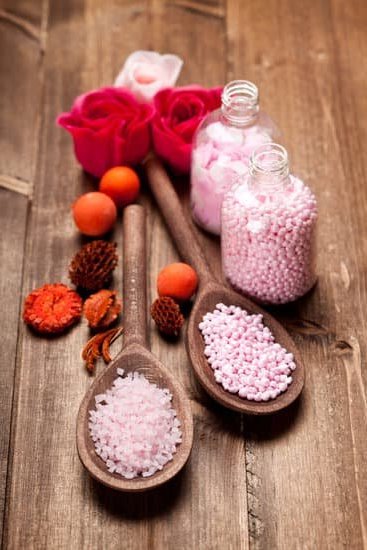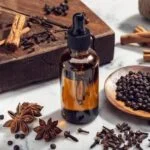Aromatherapy is a holistic healing treatment that utilizes natural plant extracts to promote health and well-being. One of the most popular ways aromatherapy is used is in conjunction with massage therapy. But, is aromatherapy good for massage? The combination of soothing scents and therapeutic touch can provide an enhanced experience for both the body and mind.
The practice of aromatherapy dates back centuries, with ancient civilizations like the Egyptians, Greeks, and Chinese using aromatic plant oils for medicinal purposes. Today, aromatherapy continues to be a widely practiced form of alternative medicine, gaining recognition for its various benefits in promoting relaxation, reducing stress, and alleviating pain. When paired with massage therapy, the effects of aromatherapy can be even more profound.
By incorporating specific essential oils into massage treatments, aromatherapy can enhance the overall experience by uplifting mood, reducing muscle tension, and improving circulation. Different types of essential oils offer unique properties that cater to individual needs and desired outcomes. From lavender for stress relief to eucalyptus for pain management, each oil provides specific benefits that can complement various massage techniques for a truly therapeutic session.
The History of Aromatherapy
Aromatherapy, the use of essential oils for therapeutic purposes, has a rich history that spans across various cultures and ancient civilizations. The practice of using aromatic plant extracts can be traced back thousands of years to ancient Egypt, where essential oils were used in religious ceremonies, medicinal treatments, and even for embalming the dead. The Egyptians believed in the powerful healing properties of essential oils derived from plants like frankincense, myrrh, and cedarwood.
Similarly, in ancient China and India, aromatic herbs and oils were valued for their medicinal properties as well as their ability to enhance spiritual practices. Traditional Chinese medicine incorporated aromatics into treatments such as acupuncture and massage therapy to promote overall well-being and balance energy flow within the body. In India, Ayurvedic medicine utilized essential oils known as “attars” for their therapeutic benefits in treating a range of health conditions.
Throughout history, aromatherapy has been embraced by various cultures around the world for its holistic approach to healing and relaxation. The Greeks and Romans also recognized the therapeutic value of aromatic substances like lavender, rosemary, and chamomile in promoting physical and mental wellness. As time progressed, the practice of aromatherapy evolved and spread to different parts of the globe, each culture infusing its unique beliefs and traditions into the use of essential oils for health and wellness purposes.
The timeless appeal of aromatherapy is a testament to its enduring efficacy in promoting balance, reducing stress, and enhancing overall well-being. Today, this ancient practice continues to thrive as more people recognize the benefits of incorporating aromatherapy into modern wellness routines – especially when combined with massage therapy techniques.
This integration not only enhances the sensory experience during a massage session but also amplifies the therapeutic effects by synergizing the healing properties of both touch and scent. Aromatherapy truly adds another dimension to massage therapy by engaging multiple senses simultaneously for a deeply relaxing and rejuvenating experience.
Benefits of Aromatherapy in Massage
Aromatherapy, the practice of using natural plant extracts to promote health and well-being, is a valuable addition to massage therapy. When combined, aromatherapy and massage create a powerful synergy that enhances the overall therapeutic benefits. The use of aromatherapy oils in massage treatments can elevate the experience for both the client and the therapist by providing not only physical but also mental and emotional benefits.
One of the key advantages of incorporating aromatherapy oils in massages is their ability to induce relaxation and reduce stress. Essential oils like lavender, chamomile, and ylang-ylang are known for their calming properties, which can help alleviate anxiety and promote a sense of tranquility during the massage session. The inhalation of these soothing scents triggers the brain to release neurotransmitters that induce feelings of relaxation, making the massage more effective in easing tension in both the body and mind.
Moreover, aromatherapy oils used in massage can help improve circulation and alleviate muscle pain. Oils such as peppermint, eucalyptus, and rosemary have analgesic and anti-inflammatory properties that can relieve sore muscles and joint discomfort.
When applied topically during a massage, these oils penetrate the skin to reduce inflammation, increase blood flow, and aid in speeding up the healing process. This dual action of physical manipulation through massage techniques coupled with the therapeutic effects of essential oils makes for a more holistic approach to addressing muscular issues.
| Advantages of Aromatherapy in Massage | Description |
|---|---|
| Relaxation and Stress Reduction | The use of calming essential oils induces relaxation and alleviates anxiety during massages. |
| Improved Circulation | Oils with anti-inflammatory properties like peppermint aid in increasing blood flow during massages. |
Different Types of Aromatherapy Oils
Aromatherapy is a practice that has been utilized for centuries in various cultures around the world. This therapeutic approach involves using essential oils extracted from plants to promote physical and psychological well-being. When it comes to incorporating aromatherapy into massage therapy, the choice of essential oils plays a significant role in enhancing the overall experience and benefits of the treatment. There is a wide range of essential oils available, each with its own unique properties and potential benefits.
One popular essential oil used in aromatherapy for massage is lavender oil. Known for its calming and relaxing properties, lavender oil is often used to reduce stress and anxiety during massage sessions. Its soothing fragrance can help promote relaxation and improve sleep quality, making it an ideal choice for individuals looking to unwind and de-stress.
Another commonly used essential oil is peppermint oil, which is known for its invigorating and cooling effects. Peppermint oil can help alleviate muscle soreness and tension, making it a great option for sports massages or post-workout recovery sessions.
Eucalyptus oil is another favorite among massage therapists due to its refreshing aroma and potential respiratory benefits. This essential oil is often used in massages to relieve congestion and promote easier breathing, especially during cold or allergy seasons.
Additionally, tea tree oil is valued for its antimicrobial properties, making it a popular choice for massages targeting skin conditions or promoting overall skin health. By understanding the different properties of these essential oils and their specific benefits, massage therapists can customize treatments to meet the individual needs and preferences of their clients effectively.
Choosing the Right Aromatherapy Oil
When it comes to choosing the right aromatherapy oil for a massage session, there are several factors to consider. Different essential oils offer various properties and benefits, so selecting the appropriate one can enhance the overall massage experience. One essential oil that is commonly used in massage therapy is lavender oil. Lavender is known for its calming and relaxing effects, making it ideal for reducing stress and promoting a sense of tranquility during a massage.
Consider the Desired Outcome
Before selecting an aromatherapy oil for a massage, it’s essential to consider the desired outcome of the treatment. If the goal is to invigorate and energize the body, citrus oils such as lemon or orange may be recommended.
These oils are uplifting and refreshing, perfect for morning massages or when needing a boost of energy. On the other hand, if relaxation and stress relief are the primary objectives, soothing oils like chamomile or ylang-ylang could be more suitable choices.
Match Oil With Massage Technique
Another important factor to consider when choosing an aromatherapy oil is to match it with the specific massage technique being used. For example, if performing a Swedish massage that focuses on long, flowing strokes, lighter oils like grapeseed or almond oil may be preferred as they allow for smooth gliding movements without excess friction.
In contrast, deep tissue massages that target muscle tension may benefit from warming oils such as ginger or black pepper to help alleviate soreness and promote circulation.
In essence, the key is to select an aromatherapy oil that complements both the desired outcome of the massage and the techniques being employed. By carefully choosing the right essential oil based on these factors, therapists can create a personalized and effective experience that caters to each client’s individual needs.
How Aromatherapy Enhances the Massage Experience
Aromatherapy plays a crucial role in enhancing the overall massage experience by incorporating the use of essential oils to create a sensory-rich environment. The power of scent has been known to have profound effects on mood, emotions, and relaxation. When combined with massage therapy, aromatherapy can elevate the therapeutic benefits of the treatment, making it not just a physical experience but also a deeply calming and soothing one for the mind and spirit.
To fully appreciate how aromatherapy enhances the massage experience, it’s important to understand how our sense of smell is intricately connected to our brain and emotions. Different scents can trigger various responses within our bodies, whether it’s reducing stress and anxiety, promoting sleep, or increasing energy levels. Aromatherapy oils used in massage can help create a multi-dimensional healing session that addresses both physical tension and mental stressors.
- Calming scents like lavender, chamomile, and ylang-ylang are often used in massages to promote relaxation and alleviate feelings of anxiety.
- Invigorating oils such as peppermint, eucalyptus, and rosemary can be utilized in massages for their energizing properties and ability to improve focus and clarity.
- Balance essential oils like geranium, bergamot, and patchouli are popular choices in massages as they can harmonize emotions and create a sense of well-being.
In addition to the emotional benefits of aromatherapy in massage therapy, the sense of smell also influences memory recall. By associating specific scents with positive experiences during a massage session, clients can create lasting memories that contribute to an overall feeling of relaxation every time they encounter those particular aromas again. This sensory stimulation enhances the effectiveness of the massage treatment by creating a holistic approach that addresses not just physical ailments but also mental well-being.
Is aromatherapy good for massage? Absolutely – it adds an extra layer of therapeutic value that can transform a regular massage into a truly rejuvenating experience.
Aromatherapy Massage Techniques
Aromatherapy oils can greatly enhance the overall massage experience, providing a holistic approach to relaxation and healing. When combined with specific massage techniques, the benefits of aromatherapy are maximized, resulting in a more effective treatment for both the mind and body.
One popular technique when incorporating aromatherapy oils is Swedish massage, which focuses on long, flowing strokes to promote relaxation and improve circulation. By adding calming essential oils like lavender or chamomile to the massage oil, clients can experience deep relaxation and stress relief during their session.
Another technique that synergizes well with aromatherapy oils is deep tissue massage, which targets deeper layers of muscle tissue to release tension and alleviate chronic pain. By using invigorating essential oils such as peppermint or eucalyptus in the massage blend, the therapist can enhance the therapeutic effects of the treatment, promoting muscle recovery and reducing inflammation. The combination of deep tissue massage with aromatherapy not only helps relieve physical discomfort but also provides a rejuvenating experience for the senses.
Trigger point therapy is another effective method that can benefit from the use of aromatherapy oils. This technique focuses on releasing specific areas of muscular tension through targeted pressure points.
When paired with essential oils known for their analgesic properties like ginger or frankincense, trigger point therapy can be even more effective in reducing pain and improving mobility. The aroma of these essential oils adds an additional element of sensory stimulation, helping clients relax further and enhance their overall well-being during the session.
| Aromatherapy Technique | Recommended Essential Oils |
|---|---|
| Swedish Massage | Lavender, Chamomile |
| Deep Tissue Massage | Peppermint, Eucalyptus |
| Trigger Point Therapy | Ginger, Frankincense |
Precautions and Considerations
Aromatherapy can be a wonderful addition to any massage therapy session, offering numerous benefits for both the body and mind. However, it is essential to exercise caution and be aware of certain precautions and considerations when incorporating aromatherapy oils into massage treatments. Here are some important safety measures to keep in mind:
- Always dilute essential oils properly: Essential oils are highly concentrated substances that should never be applied directly to the skin in their undiluted form. It is crucial to mix them with a carrier oil, such as coconut or almond oil, before using them for massage.
- Perform a patch test: Before applying any new essential oil to a client’s skin, always conduct a patch test to check for any allergic reactions or sensitivities. This can help prevent adverse effects and ensure the client’s safety.
- Consult with clients about allergies and medical conditions: It is important to ask clients about any existing allergies, sensitivities, or medical conditions before using aromatherapy oils in their massage. Certain oils may not be suitable for individuals with specific health concerns.
In addition to these precautions, there are also contraindications to consider when using aromatherapy oils in massage therapy. Some essential oils may not be safe for pregnant women, individuals with certain medical conditions, or children. It is crucial to research each oil thoroughly and understand its potential risks before incorporating it into a massage treatment.
Overall, while aromatherapy can enhance the massage experience and promote relaxation and healing, it is vital to prioritize safety first. By following proper precautions, conducting thorough assessments of clients’ health histories, and being mindful of contraindications, you can harness the benefits of aromatherapy effectively and ensure a safe and therapeutic massage experience for all clients.
Conclusion
In conclusion, aromatherapy has proven to be a beneficial addition to massage therapy, enhancing the overall experience for both the client and the therapist. The use of essential oils in massage treatments dates back centuries and has been valued for its therapeutic properties across different cultures. Incorporating aromatherapy oils not only adds a pleasant scent to the session but also brings about various physiological and emotional benefits.
Different types of aromatherapy oils offer unique properties that can cater to specific needs and preferences. From lavender for relaxation to peppermint for invigoration, selecting the right oil plays a crucial role in maximizing the effectiveness of the massage treatment. By choosing the appropriate oil and combining it with suitable massage techniques, therapists can create a customized experience that addresses individual concerns and promotes overall well-being.
Ultimately, the sensory benefits of aromatherapy in creating a soothing environment cannot be overlooked. The calming scents of essential oils contribute to relaxation, stress relief, and heightened emotional well-being during a massage session.
With proper precautions taken into consideration, incorporating aromatherapy into massages not only enhances the physical benefits but also nurtures a holistic healing experience for clients seeking relaxation, rejuvenation, and peace of mind. Aromatherapy undeniably enriches the overall massage experience and is undoubtedly good for massage therapy as it enhances mind-body connection and promotes overall wellness.
Frequently Asked Questions
How Is Aromatherapy Used in Massage?
Aromatherapy is commonly used in massage by incorporating essential oils into the session. These oils are chosen based on their therapeutic properties, such as relaxation, energizing, pain relief, or stress reduction. The oils are either applied directly to the skin or diffused into the air to create a relaxing atmosphere during the massage.
What Is the Difference Between a Normal Massage and an Aromatherapy Massage?
The main difference between a normal massage and an aromatherapy massage lies in the use of essential oils. While a regular massage focuses on releasing tension in muscles and increasing circulation, an aromatherapy massage adds the benefits of inhaling essential oil molecules for an enhanced therapeutic experience.
The aromatic scents can help to relax the mind and body, promoting overall well-being.
What Are the Disadvantages of Aromatherapy Massage?
Despite its many benefits, there are some disadvantages to aromatherapy massage that should be considered. Some people may be sensitive or allergic to certain essential oils, causing skin irritation or respiratory issues.
Additionally, if not administered properly, high concentrations of essential oils can lead to headaches or nausea. It’s important to disclose any allergies or sensitivities to your massage therapist before beginning an aromatherapy session to avoid any adverse reactions.

Are you looking for a natural way to improve your health and wellbeing?
If so, aromatherapy may be the answer for you.






